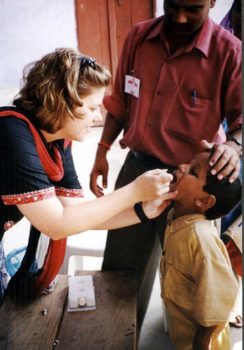Childhood Vaccines in India, Part 1
Part 1: How vaccines are made and how they work
In 2008, WHO estimated that 1.5 million of deaths among children under 5 years were due to diseases that could have been prevented by routine vaccination. This represents 17% of global total mortality in children under 5 years of age.
Hygiene, proper nourishment and sanitary conditions make for a healthy community, with lowered incidence of infectious disease, but since much of this is lacking in developing countries, vaccination is very helpful to giving the immune system a boost.
We can thank scientists, physicians and engineers for their work in understanding the immune system and how to make it work for us against disease by using vaccinations.









Childhood Vaccines in India, Part 2
Part 2: Vaccination Challenges in Developing Countries
Developing countries generally wait an average of 20 years between when a vaccine is licensed in industrialized countries and when it is available for their own populations. Economic, infrastructural and scientific hurdles all contribute to this long delay. The Global Alliance for Vaccines and Immunization (GAVI) is a partnership between many public and private organization, including UNICEF, WHO, the Bill and Melinda Gates Foundation, members of the vaccine industry and NGOs. GAVI was formed in 1999 to address the long delay between vaccine availability in industrialized countries and developing countries. Scientific advances that would help make more vaccines available in developing countries include the development of temperature stable vaccines, development of vaccines that required less than three doses to immunize and the development of needle free methods to administer vaccines.
12 years ago Blog, Health, STEM, Travel • Tags: bioengineers, CDC, cold chain system, Gates Foundation, HIV, India, International Reporting Project, malaria, The History of Vaccines, tuberculosis, UNICEF, Vaccine Viral Monitors, vaccines, WHO